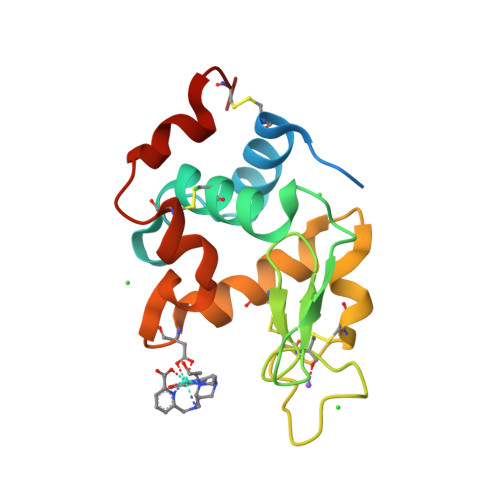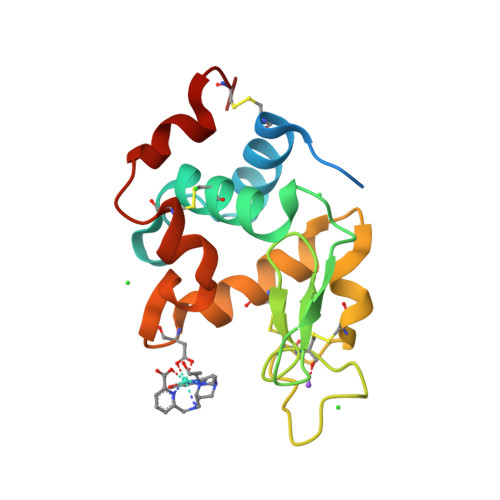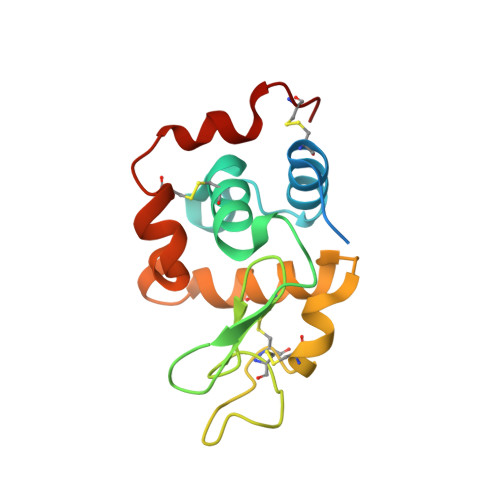Influence of Chemical Modifications of the Crystallophore on Protein Nucleating Properties and Supramolecular Interactions Network.
Roux, A., Alsalman, Z., Jiang, T., Mulatier, J.C., Pitrat, D., Dumont, E., Riobe, F., Gillet, N., Girard, E., Maury, O.(2024) Chemistry 30: e202400900-e202400900
- PubMed: 38738452
- DOI: https://doi.org/10.1002/chem.202400900
- Primary Citation of Related Structures:
8OWC, 8P2Q, 8PIW, 8POB - PubMed Abstract:
Crystallophores are lanthanide complexes that have demonstrated outstanding induction of crystallization for various proteins. This article explores the effect of tailored modifications of the crystallophore first generation and their impact on the nucleating properties and protein crystal structures. Through high-throughput crystallization experiments and dataset analysis, we evaluated the effectiveness of these variants, in comparison to the first crystallophore generation G 1 . In particular, the V 1 variant, featuring a propanol pendant arm, demonstrated the ability to produce new crystallization conditions for the proteins tested (hen-egg white lysozyme, proteinase K and thaumatin). Structural analysis performed in the case of hen egg-white lysozyme along with Molecular Dynamics simulations, highlights V 1 's unique behavior, taking advantage of the flexibility of its propanol arm to explore different protein surfaces and form versatile supramolecular interactions.
Organizational Affiliation:
Univ. Lyon, École Normale Supérieure de Lyon, CNRS UMR 5182, Laboratoire de Chimie, 46 allée d'Italie, 69007, Lyon, France.





















